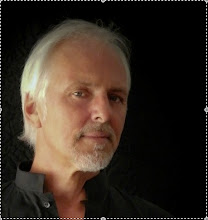By 1066 Harald Hardraada had earned the nickname Landwaster through through ferocity and ruthlessness. He also had a secret weapon of huge value. 'The most dangerous little bugger alive,' is how the terrible Landwaster complacently describes his chief of staff, the Scraeling. That gives you an idea of Michael Burr’s riveting take on the momentous events of a somewhat crucial year in English history! This excerpt is from Landwaster by Michael Burr, an exciting debut author published by Quaestor2000.
However the English, too, were heartened at their success in that most unlikely of sectors, and when Tostig’s line began to bend a third time fierce eyes on top of the hill marked it.Hardraada’s trumpets screamed and the Landwaster banner swooped down the hill as the ravens of Odin stooped and the leder’s personal praetorians crashed into the English fyrd to send them staggering and reeling back into the embraces of the marsh. Once the deed was done, though, the trumpets pealed again and the banner retreated to the hilltop where it paused only long enough to see Skuli’s division launched like a dart along the firmer banks of the River Ouse at the English right before it thundered again down the hill to bury itself, a huge steel arrowhead, in Morcar’s centre.Suddenly – and from where I watched it was like the snapping of a rope – the English line collapsed and Skuli simply rolled it up as I had been wont to roll up my cloth after an afternoon’s amber-trading in Miklagaard. Resistance before him ceased and the ravens gorged and gorged as axes and blades rose and fell and the battle dissolved into knots of figures struggling to surrender to those too drunk with slaughter and blood-lust to take any heed.Perhaps fifteen minutes had passed between Hardraada’s thunderbolt charge to Tostig’s aid and the English rout, and as I watched the final stages, sickened, a growing stream of figures ran, staggered and stumbled along the road back to where the walls of the city were just visible in the distance. Dark figures leaped in pursuit with the energy and vigour that comes from triumph, but Hardraada’s trumpets wailed for the last time that day and, reluctantly, the dark figures broke off and turned back.Oh I knew why – and it had nothing to do with mercy. Nothing urges surrender quite so dramatically as the visible presence of a bleeding defender, and the remnants of a shattered army would tell their own story. The Rus again, I thought – leave a few to tell the tale.And across the field in a day that was not yet ten hours old, came striding Hardraada, dread lord of the North, acknowledging the “Vess-heil!” salutes of his warriors who were despatching the dying, and looting them ere they stopped twitching. But neither he nor they knew that the Landwaster, the most famed soldier of our time, had won his last fight.

7 comments:
Stamford Bridge outside York, is it not?
Good guess Jen. Right area, wrong battle. This scene takes place a few days before Stamford Bridge...
OK then it must be the battle of Gate Fulford or, 'the road of the foul ford.' This used to be my period before I went all romantic. Banners of Alba, Dark Pool and Far AFter Gold are full of Vikings.
Jen
Fulford Gate, near York.
Carla, by coincidence I've just read your post on the size of armies (over at http://www.carlanayland.blogspot.com ) and I guess you should know; indeed you do. Hope to see you here often!
You got me.. I said Stamford Bridge too.. have you read Vyzantium where the author has Harold Hadrada leading the Verangian guard??
Nan Hawthorne
An Involuntary King: A Tale of Anglo Saxon England
P.S. Hi Carla!
Post a Comment